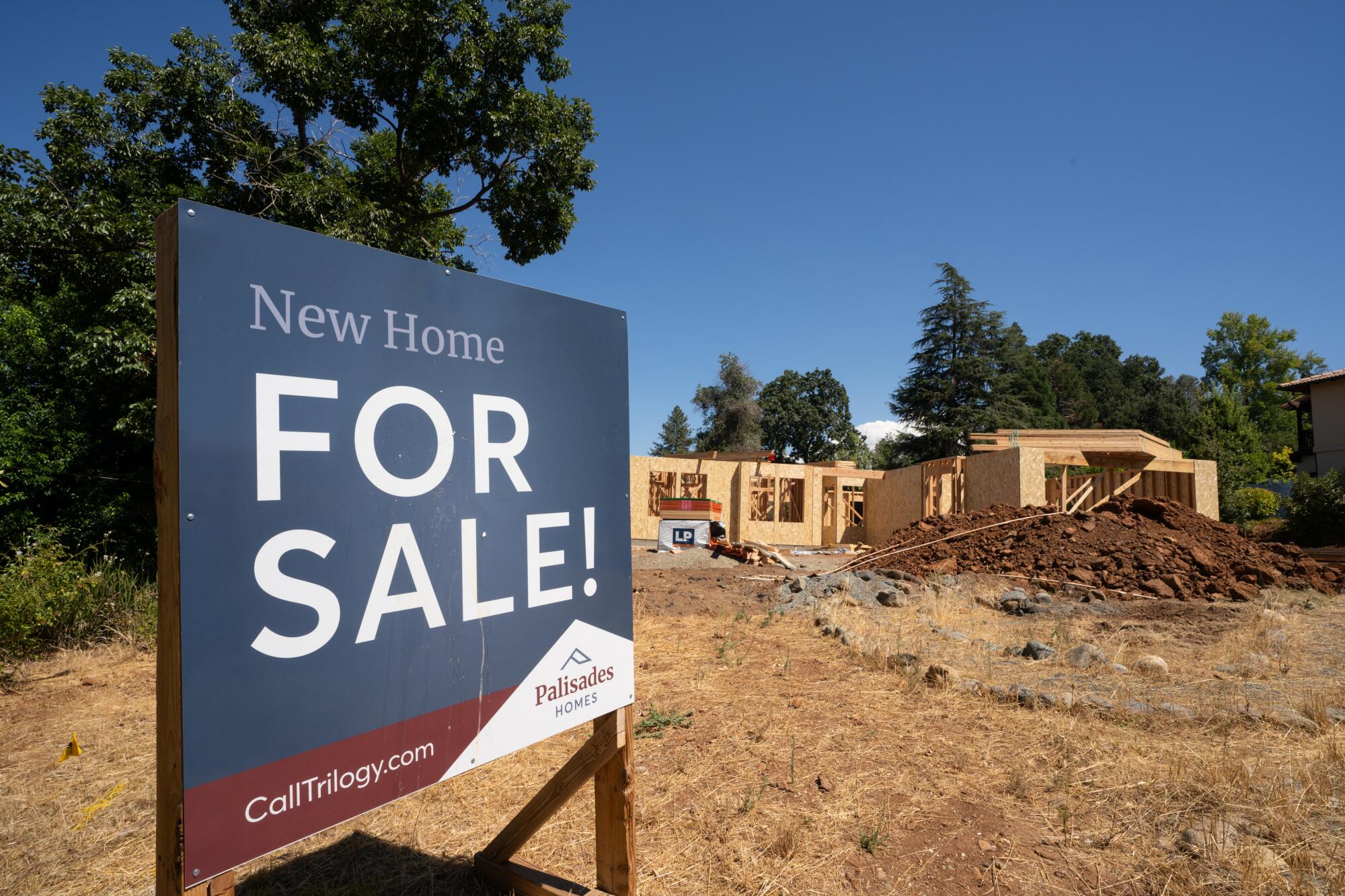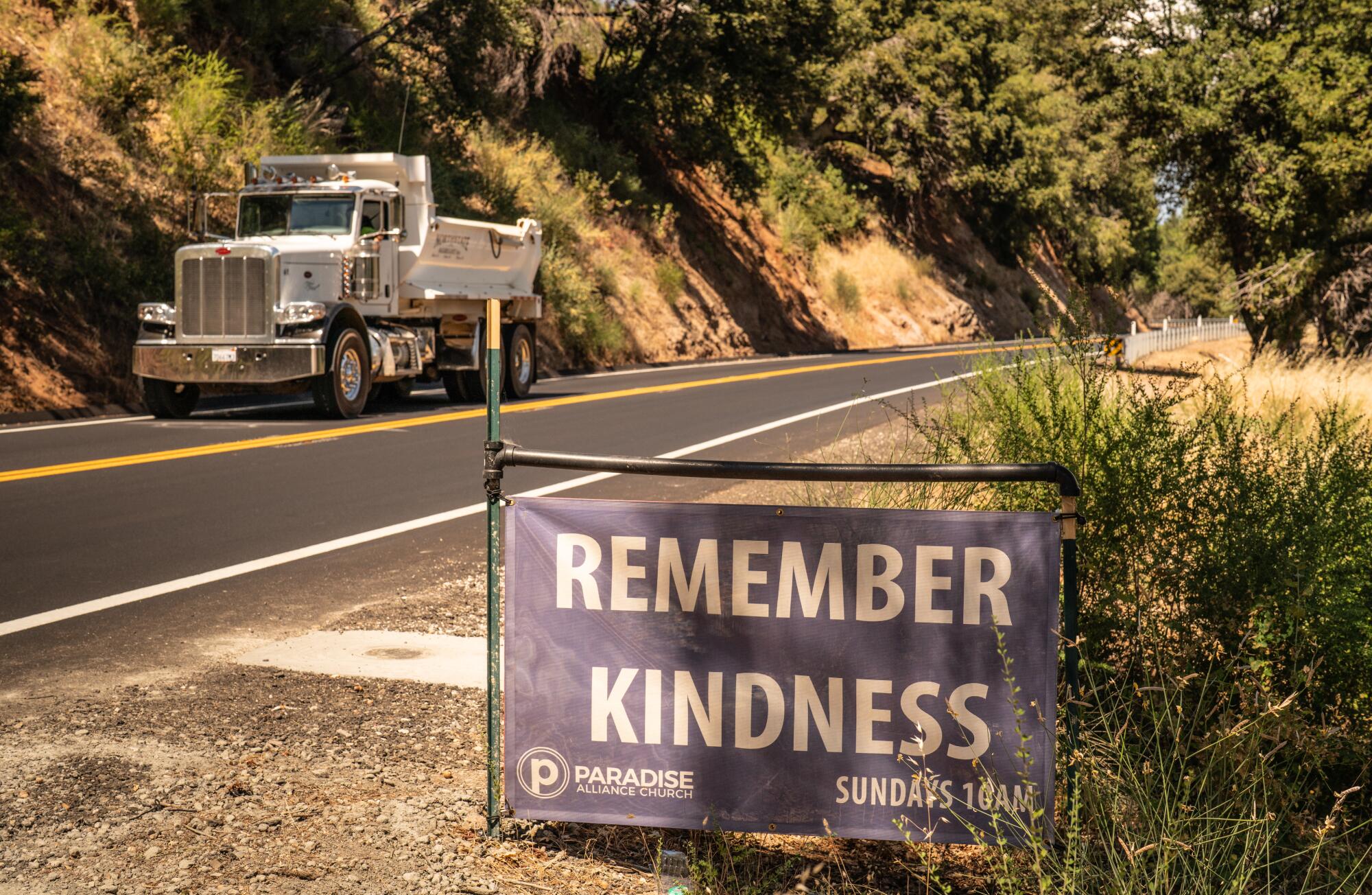
- Share via
Greg Bolin returned to his home in Paradise, Calif., to find his wife in tears. She had been watching news coverage of the firestorms in Los Angeles.
“It’s just exactly — these people, they’re lost. They don’t know where to go,” Bolin recalled her saying.
The memories all rushed back.
The couple had barely escaped the devastating 2018 Camp fire that killed 85 — while they were stuck trying to flee on gridlocked roads, propane tanks exploded on nearby properties and ash rained from the sky.

Bolin, the vice mayor of the town at the time, spent the night at a friend’s place alongside five other displaced families. Like most in Paradise, his home was decimated.
Paradise still has not fully recovered, but many wildfire safety advocates have praised the town’s response to the fire. In an interview with The Times, Bolin — who runs a construction business and served as mayor for two years after the fire — shared the lessons he learned from Paradise’s recovery and offered advice for Angelenos.
Building safer, better neighborhoods
After the fire abated, Paradise’s town council adopted an ambitious and extensive long-term recovery plan that has become the town’s guiding light for the last half decade.
The recovery plan called for a “one-stop-shop” housing and permitting center in town, and instructed the town to apply for financial support for homeowners’ rebuilding projects.
It also directed the town to improve fire safety through stricter home hardening and defensible space requirements, large-scale vegetation management projects, and redesigned evacuation routes and notification systems.
As talk about significant fire safety updates remain taboo in L.A., Bolin views the tough conversations around how to rebuild differently nonnegotiable.
“It’s not an option,” he said. “This has to happen. If this doesn’t happen, we’re not coming back.”
In the aftermath, Paradise’s government came under scrutiny for haphazard evacuation-road planning and a spotty emergency alert system, which contributed what would become the deadliest wildfire in state history.

The town has since worked to eliminate dead-end roads, build new evacuation routes and expand existing ones. Paradise has also worked to bolster its emergency notification system, adding phone and radio alerts and 21 siren towers that can be heard anywhere in town.
Not everyone in Paradise is happy. Some residents whose homes burned down still live in temporary housing on properties they own but can’t afford to rebuild on until they receive settlement money for the fire. They have criticized the town for pushing them to essentially either start building or leave.
Bolin told The Times in 2023 that these critiques were unfounded, and that Paradise was doing everything it can to help lower-income residents.
“I’d like to make some rosy statement that there’s some trick to it,” he said, “but there’s not. It’s just a lot of work.”
Healing a broken community
“You’ve got to get your schools, your churches and your businesses open yesterday,” Bolin recalled the Federal Emergency Management Agency telling him after the fire. “If you don’t, people will have nothing to do, and kids will have nothing to rally around.”
After the fire, Paradise’s churches jumped in to help with fire relief, and the town made a point to bring back its annual town parade as quickly as possible, Bolin said. Paradise also rebuilt virtually all of its schools and used the opportunity to significantly upgrade the facilities. As a result, the former mayor said, a disproportionate number of the residents who returned were those with children.
“You know, I appreciate [FEMA] saying it, because it did make a big difference,” he said. “That was huge, to build community,”
L.A. lost dozens of beloved restaurants, schools and keystone religious institutions in the Palisades and Eaton fires.

Longtime Pacific Coast Highway resident Cami Colbert, processing the loss of the roadway’s iconic Reel Inn and Wylie’s bait shop, said the neighborhood felt lonely. In Altadena, the Rev. Carri Patterson Grindon was left devastated by the loss of her church. But amid all the ruins, the preschool still stood.
“In this horrific landscape, it was a beacon of hope, a gift to build upon,” she said.
For Bolin, part of the process was accepting that Paradise would never look the same, and that the trauma from the fire means some life-long locals won’t return.
“There’s people that still won’t even drive up the hill because of the PTSD,” he said. “They can’t even look at this place because it’s nothing like it was before.”
FEMA told Bolin after the fire that at least a third of the town would likely leave, and at least another third would likely stay. “Then there’s that middle 33%,” Bolin said. “That’s who you’re fighting for.”
Turning pain into progress
Those who stayed were eager to talk about solutions and get to work. Town council meetings were so well attended that the council moved them into a nearby church that could hold about 2,200 people. Each meeting was packed.
“Those weren’t fun,” Bolin said. “It was vicious.... But it was all part of the healing process.”
Bolin cautioned that, at some point, the finger-pointing has to evolve into constructive brainstorming if a community wants to make progress.

He referenced L.A.’s water pressure as an example. Two things can be true, he said: Officials and leaders weren’t adequately ready, and there isn’t a water system in the world that could control those fires.
“At first, you’re angry and you’re mad at everybody and so you’re just losing it,” he said. “The politics of it all … it was very, very frustrating and very hard for me to watch. But eventually, we got our feet underneath us.”
As emotions settled, the town council brought on an urban planning firm to develop a tangible recovery plan. Then, they began asking residents: What would it take for you to move back and feel safe?
The town came up with dozens of suggestions that, bundled together, became the foundation of Paradise’s long-term recovery plan.
Hope for Angelenos’ future
Residents of Paradise now have fundamentally more fire-conscious lives.
Evacuation zone numbers are clearly marked along all major roadways, making it nearly impossible to not know which zone you’re in. The town’s cozy, shaded forest atmosphere has opened up to reveal sweeping views of canyons and mountains. Locals face stronger home-hardening requirements and hefty fines for failing to clear the brush from their yards.

For Bolin, it’s part of the deal when you live in a fire-prone community close to — or fully immersed in — California’s wildlands. His advice to Angelenos is to accept that reality.
“You guys have no choice,” he said. “If you don’t change those things and do that differently … you’re just setting yourself up for another one.”
Even with Paradise’s recovery progress, Bolin is still conscious of the threat future fire poses. “We’re still in the experimental stages. We’re only six years out,” he said. But “the fire cycle is typically 10 years.”
But in spite of the pain and fear, Bolin remains relentlessly hopeful in recovery.
“There is a path back. It’s going to take time. You’re going to have to be patient,” he said. But “many people here have said, ‘How many times do you get to be a part of bringing back a community?’ ”
“I wouldn’t miss that for the world,” he said.







